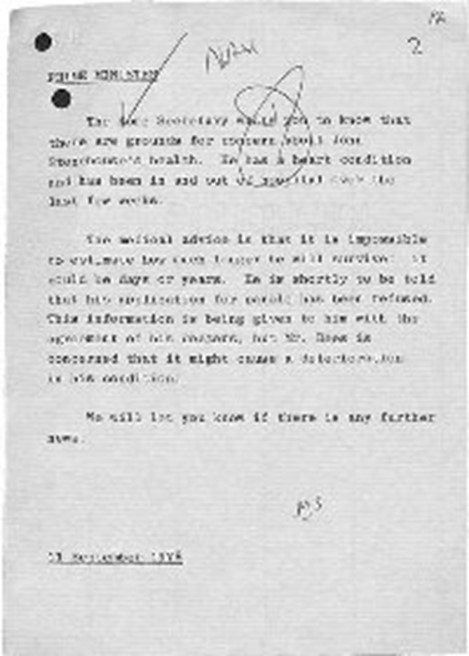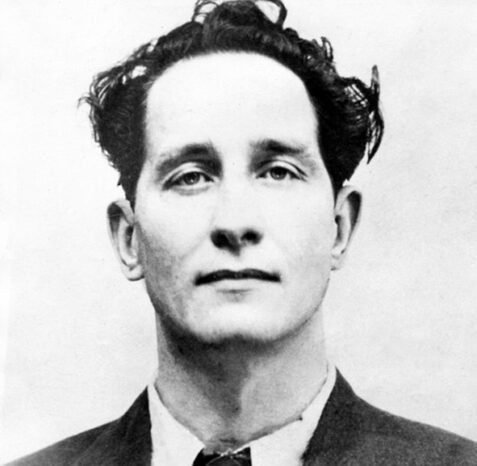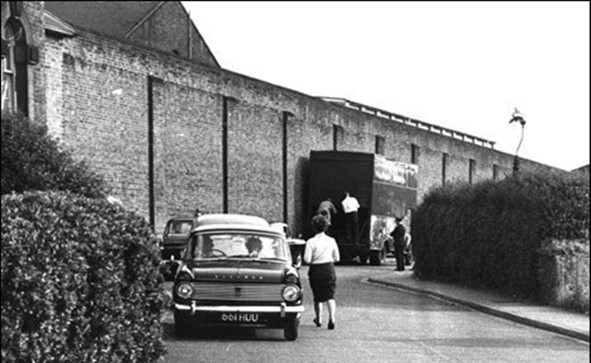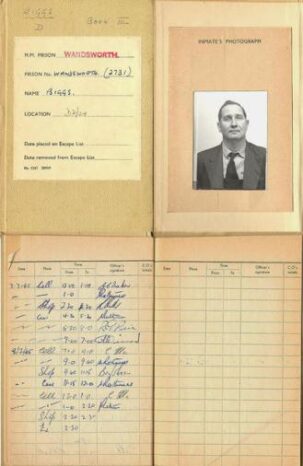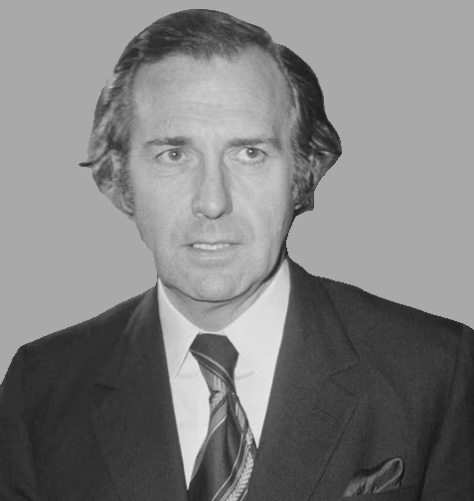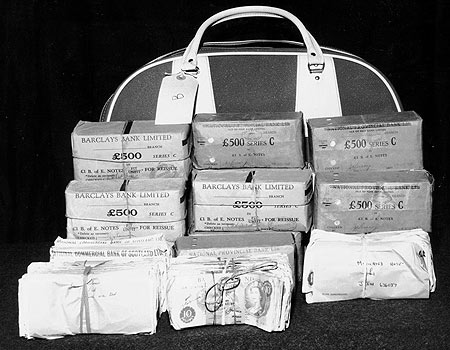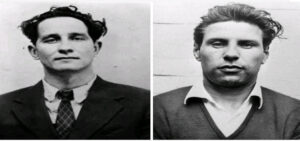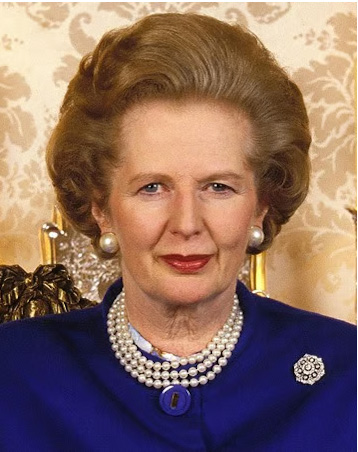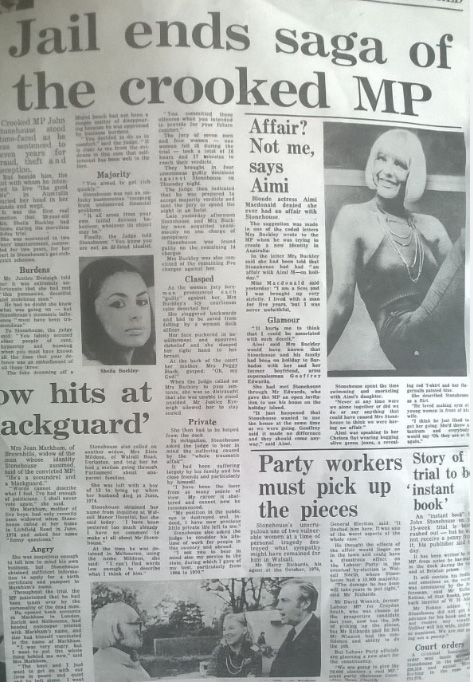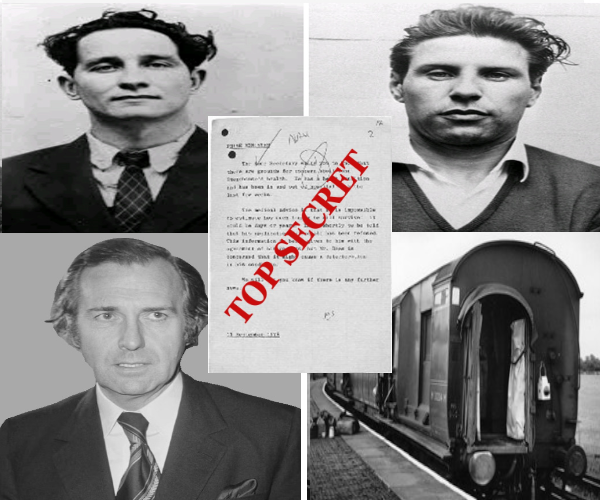
60 years ago on the 8 August 1963 was the day of the Great Train Robbery which at that time shocked the UK, however, although now most who were involved in the Great Train Robbery are now no longer with us there are still unanswered questions and many secrets surrounding the robbery which even involved a highly thought of politician who had a great influence on what happened that day and thereafter.
Reginald Bevins was the Postmaster General when the Great Train Robbery took place. He issued a statement stating fiercely that the Robbery was “an inside job” and declared a public enquiry.
Reginald Bevins the Postmaster General
That enquiry took place but it was far from a public enquiry. It was to all intent and purposes nothing short of a private enquiry for very good reasons. The report, however, was suppressed because it named the ‘suspected person’ who gave information.
That report was never made available to the Defence of any of the so called Great Train Robbers and certainly never to the defence lawyers acting for Ronnie Biggs.
That report was further suppressed in 1968 and only one copy remains. It was suppressed by the new Postmaster General in person, John Stonehouse.
In 1976 it was the same John Stonehouse MP and Privy Counsellor that was convicted of fraud and sentenced to 7 years imprisonment. He was the Postmaster General between the years of 1967/1968.
A classified document, note from the then Home Secretary to the Prime Minister, regarding the health situation of John Stonehouse states:
“The Home Secretary wants you to know that there are grounds for concern about John Stonehouse’s health. He has a heart condition and has been in and out of hospital over the last few weeks. The medical advice is that it is impossible to estimate how much longer he will survive:it could be days or years. He is shortly to be told that his application for parole has been refused. This information is being given to him with the agreement of his doctors, but Mr Rees is concerned that it might cause deterioration in his condition. We will let you know if there is any further news. 11 September 1978.”
But why the great concern for a single prisoner that reached the attention of the Home Secretary?
Ronnie Biggs
On the 8th July 1965 Ronnie Biggs one of the Great Train Robbers serving 30 years escaped from Wandsworth Jail. He had first been sent to Lincoln Prison but then transferred to what was known as the ‘Alcatraz’ of British Jails:- Wandsworth.
Ronnie Biggs was a young 35 at the time, escaped by scaling a 30ft wall with three other prisoners at 3.05pm. Former residents of Wandsworth Prison included French author Voltaire, William Makepeace Thackeray and even Oscar Wilde for a short while.
A ladder was thrown over the wall and Biggs simply climbed and went ‘over the wall’ not to be seen in England for a further forty years. Biggs found a waiting van and then three cars took him to the next four decades on the run. Nothing other than a green Ford Zephyr luxury car for Biggs would suffice for his escape. The car was found abandoned at Wandsworth Common Railway Station. The police were ordered not to perform any deep forensics on the car and thus no fingerprints were taken. Had that taken place, DCS Richard Lewis would have had a political scandal on his hands for that car would have been easily traced back to a ‘friend’ of a Government Minister.
In August the previous year another Great Train Robber also escaped from Birmingham’s Winson Green Prison.
Two escapes made so easy. Two escapes by men who were top security prisoners. Biggs was kept under strict surveillance. All his movements were strictly monitored and written in a book .This book was used at Wandsworth Prison to keep a record of the whereabouts of Ronnie Biggs. These books were kept outside the cells of anyone thought to be a potential escaper. The prison officers had to note down and sign every time the prisoner was moved.
The last entry made in Ronnie Biggs book is an almost historic moment. Biggs was noted as going to the exercise yard at 2.30 pm. That was to be the last entry as half an hour later he was gone!
In 1963 John Stonehouse was in the Ministry of Aviation and already making a name for himself taking bribes in his quest for richness and fame. What was then a State Airline, BOAC, was in the market for new aircraft. Stonehouse acting contrary to his own edict coerced the company into acquiring the Boeing Aircraft and received what was subsequently described as a ‘gargantuan’ pay off. His taste of the high life and ambitions of being a corporate mogul were in the making.
John Stonehouse
The planning and success of the Great Train Robbery was dependent on one factor. Information as to exactly when the specific train would be carrying sufficient money to make it worthwhile. The code name for the valuable informant whose identity had to be kept secret was ‘the Ulsterman’.
It is well known that not all those that participated in the Robbery were caught and answered to justice. Three are certainly still at large and two have died since of natural causes. One was a lawyer. One was a ‘would-be’ racing driver, who used to drive for the wealthy in his spare time. The other was a second substitute train driver.
What was required was information and that was easily forthcoming at a price. What the ‘gang’ had to know was exactly which train from Glasgow to Euston was carrying money. The train they targeted was a TPO (Travelling Post Office) and consisted of a number of carriages where Post Office staff sorted the mail and parcels en-route prior to its arrival in London, there was also at least eighty people on board. The second carriage from the front of the train was a HVP (High Value Package) where registered mail was sorted. Much of this consisted of cash which was the ultimate target. Usually the value of these items would have been in the region of £300,000 but, because there had been a Bank Holiday weekend in Scotland the total on the day of the robbery was £2.3 million.
The robbery was scheduled for the 8th August 1963, but on the 7th August 1963 the ‘would-be’ racing driver received information from the person whom he was driving at the time, a Government Minister, that the train to rob had to be that very evening. A percentage of the ‘take’ was promised to both the ‘would-be’ racing driver and to his source. To be sure that both would benefit from a successful robbery the ‘would-be’ driver took part strictly on the basis that he would collect his share and transport what he could in one of the few Land Rovers that were used to move 127 sacks of money.
Success was in the air on that night and the ‘would-be’ racing driver collected and took away with him £200,000 which he divided equally with his ‘source’. The fate of both men would be wholly diverse. Whilst the Great Train Robbers that were caught all served sentences of imprisonment, a fate shared by the ‘source’ in due course, the ‘would-be’ racing driver has surpassed all expectations and since 1963 has gone from strength to strength, from success to success and continues so to do.
Ronnie Biggs and Charlie Wilson
But for Ronnie Biggs and Charlie Wilson, the only two who knew the identity of the ‘top man’ who supplied the information, they wanted out of prison. Roy James tried desperately to find out the identity but never did. It would be only Ronnie Biggs and Charlie Wilson that would have a ‘hold’ over the ‘man who made it possible.’
It would not be too long before those that could be caught were, and the sentences imposed were ferocious and high. 30 years for Biggs and double figures for Wilson. By 1964 there was talk of a parole system entering legislation but when both Biggs and Wilson learnt that such would not be introduced for the next few years they decided to simply put pressure on the ‘top man’ that was by now powerful in the government.
One man who knew the story behind the Great Train Robbery was journalist Richard Keith Stott who, using his own valuable sources was at the scene of the crime within 56 minutes with his scoop of the century.
He subsequently investigated John Stonehouse but was saving the revelation for what he called ‘a rainy day’.
Who was the person that was chauffeured by the ‘would-be’ racing driver?
The same John Stonehouse!
When Charlie Wilson and Ronnie Biggs began having itchy feet and Stonehouse failed to press the Home Secretary into introducing a parole system quickly, both Wilson and Biggs sent a message via the ‘would-be’ racing driver that they would expose him. Stonehouse made, and paid for, all the arrangements for both Wilson and Biggs to escape. The ‘would-be’ racing driver was the van driver that took Biggs away to an awaiting Ford Zephyr. The false passport used by Biggs to leave the UK was actually a real passport obtained from the Passport Office that Stonehouse had paid an official visit.
Ronnie Biggs and Charlie Wilson when interviewed about how they managed to flee with such ease they maintained the code of silence. Biggs returned to the UK after an absence of forty years only to be jailed immediately to serve the remainder of his sentence. It was only the persistence of his defence lawyer and an ‘arrangement’ with the Minister of Justice that allowed Biggs to be released on compassionate grounds.
John Stonehouse was a known spy for the Eastern block countries. MI5 originally thought him a spy for Czechoslovakia, but he was in fact plying his trade with any country that was able to pay. Although all subsequent governments knew of his activities it would be the ‘Iron Lady’ Margaret Thatcher that vetoed any idea of him being confronted.
His business activities soured and his fate sealed. He was jailed for fraud but there would be no ‘would-be’ racing driver that would help him escape.
But why the need for money? Rumours that he was a homosexual and being blackmailed may have been a factor, but more likely was his desire to be rich. His mother was the Mayor of Southampton and he was raised very much in the Socialist doctrine and studied at the London School of Economics. Between 1962-1964 he was the President of the Co-operative Society and two big robberies that occurred in those years it is more than possible Stonehouse gave information as he gave information to the Eastern Bloc agents.
He arranged the Wilson and Biggs escape and at all material times supplied them and others with valuable information obtained from the police. It enabled Biggs to escape on a number of occasions.
When faking his own death, Stonehouse used the same route that Biggs had used and ended up – in Australia – where, after being discovered, he was deported. Both Sweden and Mauritius refused to entertain his application for asylum.
And what became of the ‘would-be’ racing driver?
His life changed for the better, going on to achieve great success both on the track and off. His story will soon be told.
STATEMENT FROM GIOVANNI DI STEFANO
If there was a trial today of a similar situation there would have been no convictions as there was no actual evidence against any of the defendants. Ronnie Biggs came back to the UK in 2001, at the age of 71 to serve out his sentence. Finally, on 7 August 2009 he was released from prison, and I assisted in his release.
What did the General postmaster MP John Stonehouse do next:
The Vanishing British MP by Giovanni Di Stefano and Caroline Bayford


